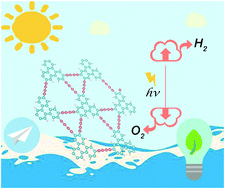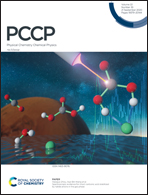Computational studies on triphenyldiyne as a two-dimensional visible-light-driven photocatalyst for overall water splitting†
Abstract
The high carrier mobility, porous configurations and tunable electronic structures of two-dimensional (2D) carbon materials hold great promise in energy conversion and storage. However, few of them are capable of photocatalytic overall water splitting. Here, by means of first-principles calculations within the quasi-particle approximation and the Bethe–Salpeter equation, we demonstrated a unique framework of triphenylenes (sp2) and acetylenic linkages (sp), namely triphenyldiyne (TDY) that has the electronic band structure suitable for photocatalytic overall water splitting along with pronounced optical absorbance in visible light. The redox ability of its photogenerated electrons is high enough to drive the hydrogen evolution reaction (HER). Through Ni doping with TDY, its overpotential for the oxygen evolution reaction (OER) can be reduced to match the redox ability of its photogenerated holes, enabling the photocatalytic overall water splitting in sunlight without the need of sacrificial reagents. This work offers not only a low-cost, earth-abundant and environmental-friendly photocatalyst, but also a promising strategy for designing highly efficient photocatalysts for overall water splitting.



 Please wait while we load your content...
Please wait while we load your content...